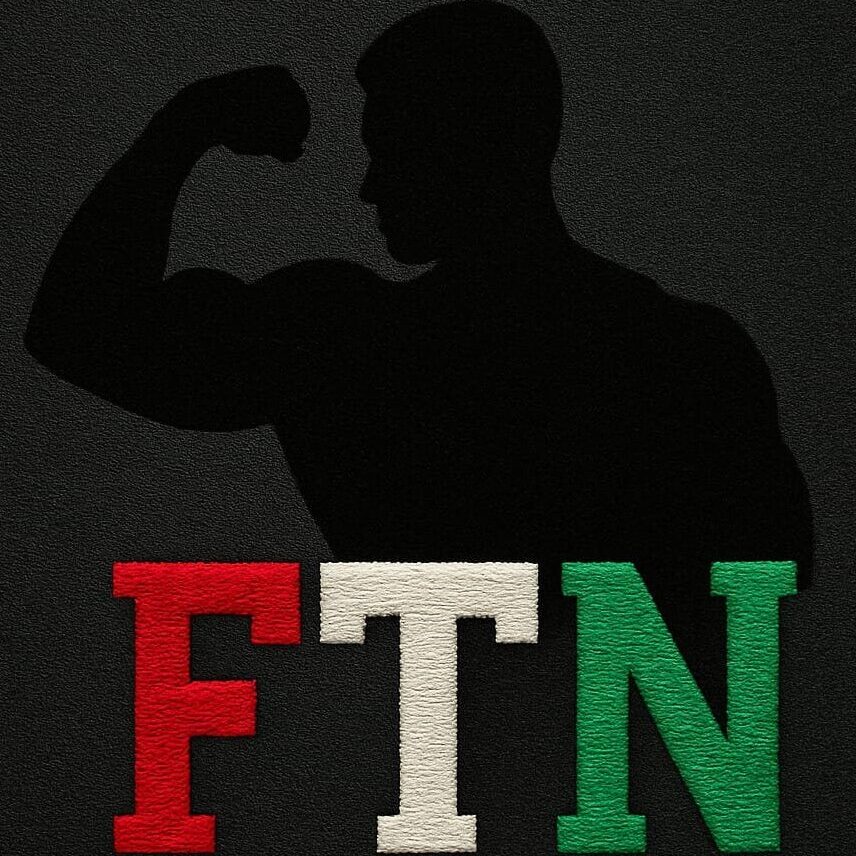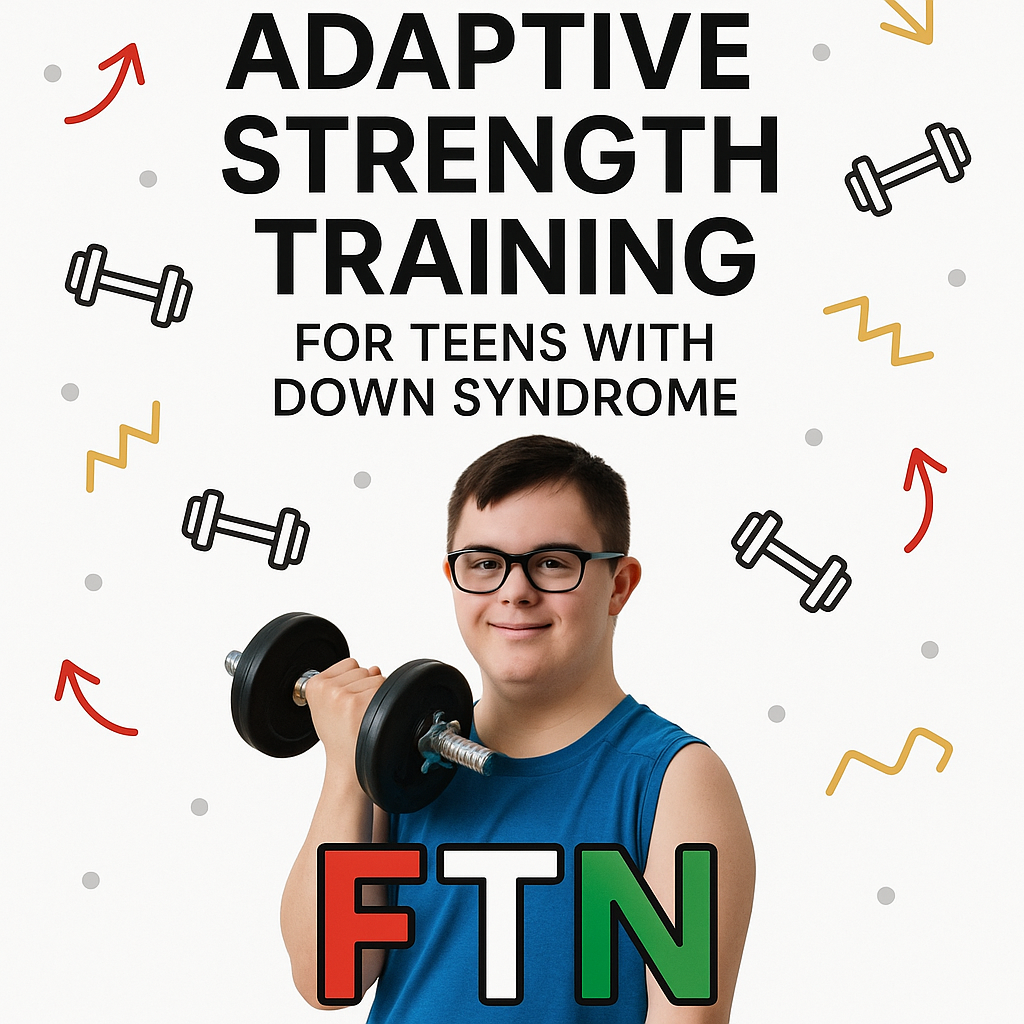Understanding Down Syndrome and Its Impact on Physical Health 🧬💪
Down syndrome—also called Trisomy 21—is a genetic condition that occurs when a person has an extra copy of chromosome 21. This extra genetic material can affect a person’s development in various ways, particularly in terms of physical health, muscle tone, coordination, and strength. For many teenagers with Down syndrome, these challenges can create barriers to participating in regular physical activity—but with the right support and programs, they can thrive and lead active, healthy lives.
What Is Down Syndrome 🧠🧒
Down syndrome is one of the most common chromosomal conditions, affecting approximately 1 in every 700 births in the United States. While it is often associated with cognitive delays, it also comes with a range of physical characteristics and health challenges, including:
Low muscle tone (hypotonia)
Joint flexibility
Shorter limbs
Poor balance and coordination
Higher risk of obesity, heart disease, and orthopedic problems
These factors can significantly influence a teen’s physical abilities and their overall wellness. That’s why it’s crucial to understand how Down syndrome affects the body, and how targeted interventions—like strength training—can help.
Why Physical Fitness Matters for Teens with Down Syndrome 🏃♂️❤️
Teens with Down syndrome often struggle with reduced muscle tone, making it harder to develop physical strength. This can impact daily activities, from walking long distances to maintaining posture in a classroom setting. Without adequate physical exercise, the risk of obesity, cardiovascular disease, and poor mental health increases.
On the other hand, regular physical activity can help improve:
✅ Muscle strength
✅ Cardiovascular health
✅ Coordination and balance
✅ Emotional well-being
✅ Social confidence
Exercise also supports better sleep, enhances mood, and provides opportunities for social engagement—especially when done in inclusive group settings.
The Power of Strength Training 💪🧒
Strength training is one of the most effective ways to address the physical challenges associated with Down syndrome. When properly adapted, it can lead to remarkable improvements in fitness, mobility, and independence. Here’s how it helps:
Improves posture and stability
Boosts metabolism and reduces body fat
Develops better motor control and reflexes
Increases confidence and motivation
With supervision and customization, teens can perform resistance exercises safely and effectively, often using light weights, resistance bands, or even bodyweight exercises.
Creating an Adaptive Strength Training Program 📝🏋️
Every teen is unique, so a personalized plan is essential. Here are the key steps to designing an effective, inclusive strength training program:
1. Assess Individual Abilities
Start with a fitness assessment to determine baseline strength, flexibility, and mobility. This helps in setting realistic and safe goals.
2. Set SMART Goals
Goals should be Specific, Measurable, Achievable, Relevant, and Time-bound. For example:
Increase the number of squats by 5 reps in 2 weeks
Hold a plank for 10 seconds longer by the end of the month
3. Choose the Right Exercises
Focus on functional movements like:
Wall push-ups
Chair squats
Resistance band rows
Calf raises
Seated torso twists
These exercises target the upper body, lower body, and core.
4. Adapt and Modify 🛠️
Adjust intensity, reps, or form as needed. For instance, perform push-ups on the wall instead of the floor or reduce weights to maintain safety.
5. Include Rest and Recovery 🧘
Rest is just as important as training. Include rest days and ensure the teen gets proper hydration, nutrition, and sleep.
Making Fitness Fun and Engaging 🎯🎉
Keeping teens motivated is key. Here are some fun ways to maintain engagement:
Turn workouts into games (e.g., obstacle courses)
Use music to energize training sessions 🎵
Incorporate group workouts to promote teamwork and social skills
Celebrate small wins with stickers, certificates, or simple high-fives
Fitness should be something to look forward to—not a chore. Fun and variety are essential!
Safety First: Injury Prevention Tips ⚠️👟
When working with teens who have Down syndrome, safety must come first:
Start with a warm-up to prepare the muscles
Use proper form to avoid strain
Watch for signs of fatigue or discomfort
Ensure close supervision by a trained instructor or caregiver
Use adaptive equipment if needed, such as stability balls or hand grips
Creating a comfortable, supportive space helps build trust and minimizes risk.
Tracking Progress and Building Confidence 🏆📈
Progress can be measured in many ways—not just through reps or weight lifted. Improvements in coordination, mood, and independence are equally important.
Keep a training journal
Take photos or videos (with consent)
Celebrate milestones
Give verbal encouragement regularly
These positive reinforcements help build a healthy self-image and long-term motivation.
Family and Community Involvement 👨👩👧👦🏘️
The role of families and communities cannot be overstated. Parents and caregivers can:
Join in training sessions
Reinforce healthy habits at home
Encourage participation in local fitness events
Community centers, schools, and non-profits should also be proactive in offering inclusive programs tailored for youth with special needs. These initiatives foster social inclusion and provide necessary support.
Helpful Resources in the U.S. 🇺🇸📚
If you’re looking to get started, here are some reliable organizations offering guidance and support:
Special Olympics: Provides training and events nationwide
National Down Syndrome Society (NDSS): Offers health and wellness resources
Local YMCAs and community centers: Often have inclusive fitness classes
Adaptive fitness trainers: Certified professionals trained to work with individuals with disabilities
These resources can help families and teens find safe, inclusive, and enjoyable ways to stay active.
Conclusion: Empowering Teens with Down Syndrome Through Fitness 🌟💖
Physical health is an essential part of life for everyone, including teens with Down syndrome. With the right guidance, support, and mindset, they can build strength, boost confidence, and enjoy active lifestyles just like their peers. Strength training, in particular, offers a powerful path to better health—physically, emotionally, and socially.
By focusing on adaptive, inclusive fitness approaches and involving families and communities, we can create an environment where every teen feels empowered, capable, and proud of their progress. Let’s build a future where inclusion is the standard, not the exception.
This video—”Hip Strength and Stability Workout – Down Syndrome Fitness”—adds essential depth to this guide by demonstrating targeted, practical exercises that directly support teens with Down syndrome in building strength and balance. What sets this video apart is its focus on:
✅ Functional movement patterns that help improve posture, reduce fall risk, and enhance walking stability—key areas of concern for adolescents with low muscle tone.
✅ Visual step-by-step demonstration that simplifies learning for both teens and caregivers, making it easier to follow and replicate safely at home.
✅ Adaptable approach using minimal equipment (resistance bands, a chair), making it accessible for families, schools, and community programs without advanced resources.
“Have you tried these exercises with your teen? Share your experience or adaptations in the comments below—we’d love to hear what works best for your family.”

